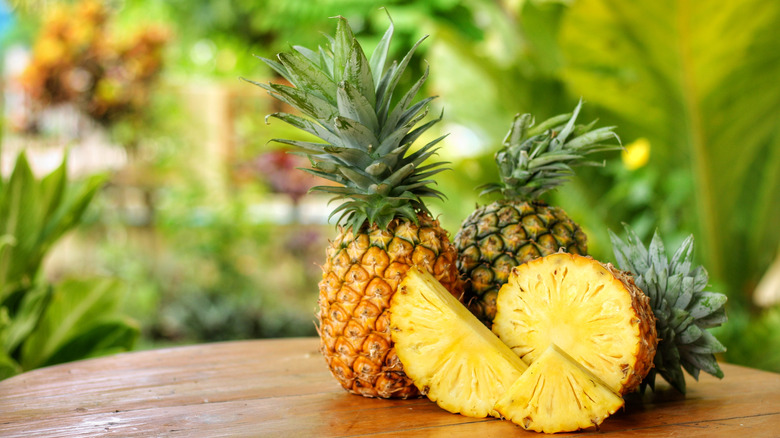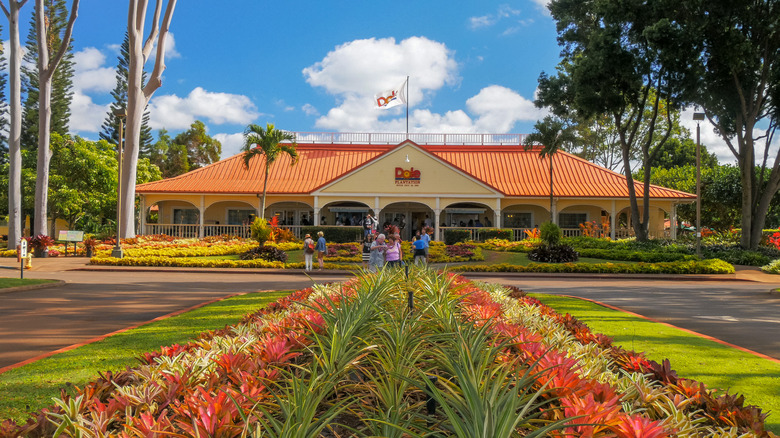The Real Reason Americans Often Associate Pineapples With Hawaii
In the minds of many Americans, pineapples are directly tied to the Hawaiian Islands. The Spruce Eats states that Christopher Columbus had a hand in spreading the golden fruit across the globe after transporting it to Europe from the island of Guadeloupe in the late 1400s, but the pineapple took quite a few journeys across unrelated waters before finding its way into American culinary culture.
Botanically named Ananas comosus, the fruit became known as pineapple due to its similarity in appearance to a pine cone. Native to Brazil, Paraguay, and Argentina — not Hawaii – Smithsonian Magazine reports people are not sure who can be credited with introducing the fruit to the area. (The outlet names Don Francisco de Paula Marin as a possible source, a Spanish sailor who provided the first written account of the fruit in the early 1800s.) Regardless of how it got there, the pineapple went on to become one of the most highly prized and expensive fruits in the world (via Historic UK). This didn't escape the notice of young American entrepreneur James Dole, who set his sights on Hawaii's pineapple plants in 1899. (As noted by Smithsonian Magazine, Dole arrived on the pineapple plantation scene just a year after the United States annexed the islands.) Pineapples and Hawaii would become forever intertwined thanks to his passion and marketing know-how.
The persuasive power of pineapple marketing
Though James Dole was only 22 years old when he dove into pineapple infamy, per Smithsonian Magazine, he already knew a thing or two about growing and marketing food. As a newly minted graduate of Harvard University with a degree in business and horticulture, Dole turned a $1000 investment into the Hawaiian Pineapple Company, launching what the Dole Food Company today calls one of America's earliest national consumer advertising initiatives. In partnership with other Hawaiian pineapple growers, he advertised the fruit in magazines nationwide. Dole's efforts paid off — by 1915, he transformed pineapples into the second-largest industry in Hawaii. After buying Lanai Island seven years later, he created what became the largest pineapple plantation in the world, according to Hawaii Magazine. To honor his achievements, the company began adding the Dole name to its products in 1933.
Though the company moved its pineapple-growing operations to the Philippines and elsewhere in the early 1960s, the Hawaiian-born brand continues its strong connection to the islands. Dole still owns almost 3,000 acres of pineapple fields in Wahiawa on the island of Oahu, with the Dole Plantation solidifying its history and influence as a major tourist attraction that hosts a million or more visitors annually.
Described as a former roadside fruit stand, the Dole Plantation site now features attractions like a two-mile train journey, pineapple maze, and garden showcasing tropical fruits and coffee plants. Dole offers fresh pineapples to take home as gifts (available pre-packed and delivered to the airport, shares the Los Angeles Times) perpetuating the fond association of pineapples with The Aloha State.

